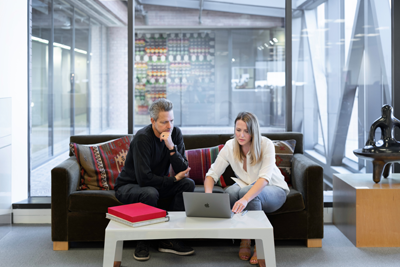A powerful asset for closing sales
A handshake reveals a lot about who you are. It can indicate trust, warmth, and honesty, or it might convey weakness, doubt, and indifference. In any case, it conveys a subtle yet significant statement about who you are to prospective purchasers. Use these tips to ensure that your handshake delivers the appropriate signals and leaves a positive impression on prospects and customers.
Avoid using the power grip. A handshake should be strong and firm, but not too dominating. Be wary of the instinctive habit of shaking to draw the other person closer to you. This might be perceived as aggressive, and the prospect’s resistance to you will increase by a notch or two.
Although it may appear painfully apparent, it is remarkable how many salesmen provide poor, cursory handshakes. This is why many customers are turned off, as firmness and friendliness ultimately win.
Analyze them through the eyes. Make eye contact and express a smile as you extend your hand. Display your teeth! A genuine and friendly greeting may turn you into an immediate friend—and, all else being equal, people love to buy from friends.
Get a hold on yourself. Never grip the fingers of another individual. Instead, take their whole hand in yours and softly squeeze it twice or thrice.
Turn up the charm! You’ve been on the phone with a prospect for several months and finally see them in reality at a trade event. To indicate your delight at meeting in person, you may wish to temporarily cover his outstretched hand with your left hand during the handshake. This improves the familiarity and tenderness of the handshake. Do not attempt this with someone you don’t know. Exchanging pleasantries with someone you’ve met before is frequently a nice gesture. It simply states, “I’m delighted to see you again.”
What should I say? A handshake is incomplete without a greeting. “It’s a pleasure to meet you,” is a safe bet. When meeting someone of high status, such as the executive chairman or the founder of a corporation, you may wish to increase the stakes by saying, “It’s a pleasure to meet you.” Your talk should begin while you are still shaking hands, for example, “John informed me that you’ve made some big upgrades to your product line.” As the speaker begins to talk, withdraw your hand gently and hesitantly. This gradual disengagement demonstrates your genuine interest in the guy and what he has to say.
What’s your body language asserting? Standing upright, approximately 3 feet (one step) away from the customer, with your hands out of your pockets, is vital. Never approach the customer from an angle, especially when the subject is fully engaged or otherwise preoccupied. Before offering your hand, be sure you have his full attention.
You’re saying your goodbyes. When the meeting is finished, shake hands again. You now have the chance to leave a lasting effect. If you’ve built rapport with the client, it’s a good idea to lightly grab his right arm with your hand during the handshake and reiterate any promises you made during the meeting.
“I’ll mail you the technical report you asked for today and call you next Wednesday,” for example. “It was a pleasure meeting you.” This two-handed shake expresses your interest and dedication to your consumer.
Lots of practice produces the best results. The great art of the handshake, like dance, requires training. Extend your hand in front of a mirror to determine if you’re exuding confidence, warmth, and excitement. Bear in mind that your handshake shows your persona and should be a natural, spontaneous act of cordial welcome. With some practice, you’ll be able to customize your handshake for each occasion and the people you meet.
A handshake is a valuable business asset that may enable you to achieve more deals and establish long-term, lucrative partnerships. All the time spent on it will be worth the effort.





